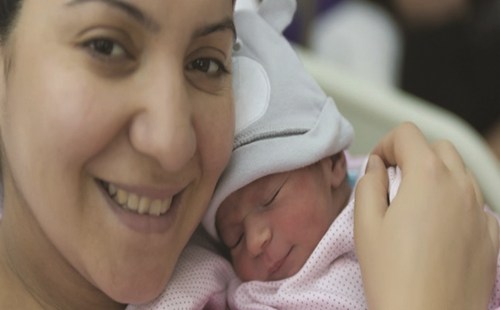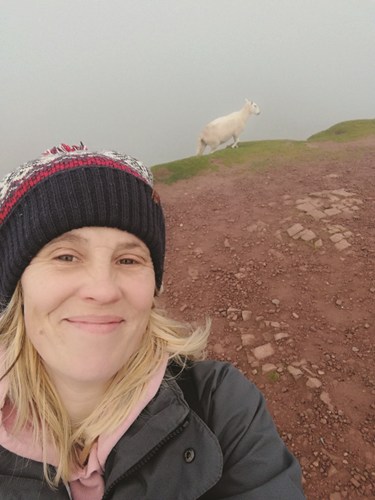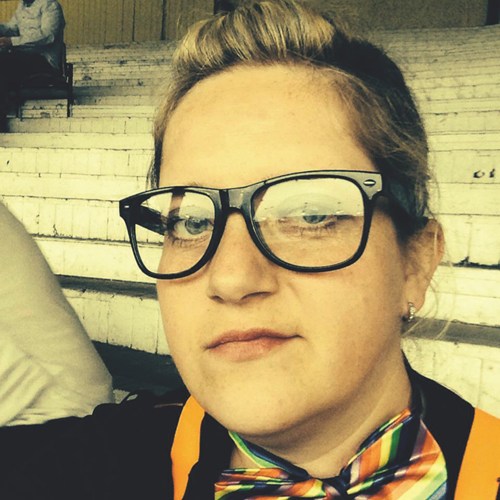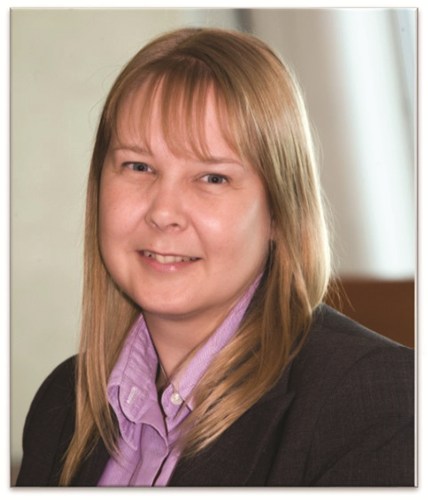Staying switched on in the workplace
By Kim Hagen (Technology Research Officer)
Do you ever worry about the challenges your child may face in the world of work? In this article, deaf adults tell us how technology helps them to overcome barriers and do the job they love.
Midwife

Lucy is severely to profoundly deaf and wears hearing aids.
I’m a midwife and provide care to women and their babies throughout pregnancy, labour and after birth. To make phone calls, I use a Phonak Roger Select radio aid transmitter and telephone adapter. It sends the caller’s voice directly into the Phonak Roger X radio aid receivers attached to my hearing aids. I also have the amplified Thinklabs One Digital Stethoscope. I connect my radio aid transmitter to the stethoscope and this sends the stethoscope’s sound to my radio aid receivers and hearing aids. It allows me to take patients’ blood pressure and heartbeat.
My advice to deaf young people is that with the right support and equipment anything is possible. I’m working in my dream job and I feel so lucky every day that I have the right equipment for the job I love.
Teaching assistant

Elizabeth is moderately to severely deaf and wears hearing aids.
I’m a teaching assistant in a mainstream primary school. I use a Phonak Roger Pen radio aid transmitter and a Phonak Roger MyLink radio aid receiver that sends the sound picked up by the transmitter into my hearing aids. It helps me hear in meetings with other staff and when I’m working with groups of children. The children speak into the Roger Pen and pass it around between them. In meetings I place the pen in the middle of the table so it picks up sound from all around.
I would say be positive and don’t give up. I failed all my exams in school as my hearing loss wasn’t diagnosed. I did most of my qualifications as an adult and had to be persistent to get where I am now, but it’s paid off as I love my job. It’s all possible with the right attitude and support.
Deaf advisor

Lenka is moderately to severely deaf.
I work as a deaf advisor at a mental health trust. I use British Sign Language interpreters and have a phone that allows me to make video calls. We have flashing fire alarms, flashing doorbells and clinical staff use vibrating pagers for emergencies. If any other departments hear their doorbell ring three times, they know that it’s a deaf staff member or service user and they will greet them face-to-face.
My advice to deaf children would be to take opportunities, chase your dreams, work hard and keep learning.
Archaeologist

Rebecca is profoundly deaf and wears cochlear implants.
I’m an archaeologist and do excavation work as well as writing archaeological reports. I use the Cochlear Phone Clip to call clients about their reports and to arrange site visits. The Phone Clip sends calls straight to my cochlear implants. I can completely remove all background noise if I’d like or, when I’m on building sites, for safety I can hear a mix of both the surrounding environment and the telephone call. Having the call streamed to both implants means I have a better chance of being able to follow what the other person is saying on the call.
Finding out what technology works for you is important. There’s no one single solution that suits everyone, we’re all different.
Trainer in a call centre

James is moderately deaf and wears hearing aids.
I train staff that join our company and am on the phone with clients a lot. I use the Phonak Roger Pen radio aid transmitter for taking and making calls and training new staff. For calls, I place the Roger Pen in its charging dock and connect the charging dock to the telephone. The pen then transmits the customer’s voice directly to the receivers in my hearing aids but also removes all background noise in the call centre which is great. I wear a standard telephone headset too so that I can use the microphone to speak to customers separately. When I’m training staff, I place the Roger Pen on the table and it picks up the voices nearby and sends them to my hearing aids, meaning hearing people is extremely easy.
My advice to deaf young people is to let employers know about your deafness. There’s amazing equipment available and a ton of support out there for everyone!
Access to Work
Most people in this article use Access to Work to get technology provided with no cost to them. Access to Work is an employment support programme that can provide practical and financial support for people who have a disability. Support can be provided where someone needs help or adaptations beyond the reasonable adjustments that must be provided by your employer. Access to Work can pay extra costs which would not be reasonable for an employer or prospective employer to pay. For more information, visit
www.gov.uk/access-to-work.
